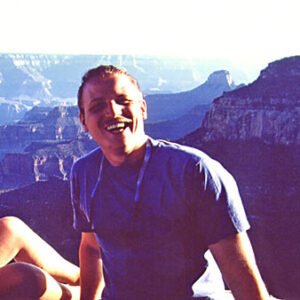You are here: Nature Science Photography – Image creation, Depth and Size – Visual image creation
The cerebral cortex distributes visual messages to approximately 30 different visual centers from the primary visual cortex. And here, too, we can follow the two separate channels of the what and where pathways. The what pathway runs from the occipital lobe diagonally downward into the temporal lobe. The areas traversed here primarily evaluate data on color and shape and give us information about „what“ an object is. The where pathway follows a shorter path and ends in the parietal lobe above the occipital lobe. The areas involved here evaluate the spatial aspects and give us information about distances and movements.
The concept of neuron groups appears to be a promising approach to explain how the individual electrical potentials of increasingly specialized neurons combine to form a coherent perception. It assumes that all centers feed back to each other and the primary visual cortex, eliminating the need for a superordinate instance to coordinate perception. So, the groups work together to make a perfectly timed concert of signals. Each complex pattern is made up of a number of neurons that are all excited at the same time and are connected to each other. Thus, the information of all centers is available simultaneously in one moment and from this synchronous activity of the cells sensitized to red and the specialists for shapes, the impression of a red car is created.
The varying degrees of neuronal involvement result in the creation of so-called maps with blurred edges, which also become active when similar impressions arise. Therefore, we do not centrally store the faces of people we know in bitmap-like individual files, but instead, many of the same neurons are active to varying degrees in each case. The individual maps can also interact with each other beyond the sensory organs‘ information. A map corresponding to the visual impression of the car interacts with the map of the acoustic sound sequence „car“, and the „car neurons“ are again partially active in the terms „engine“, „transmission“ and so on. As a result, the brain builds up the visual perceptions with great probability from a combination of very specific object features.
However, achieving the comprehensive sensory fullness of perception requires connecting with data from other brain regions that extend beyond it. Olfactory areas, for example, alert the conscious mind to strong odors. Auditory fields contribute sounds. The hippocampus, which is critical for storing memory traces, places images in the context of past experiences. The limbic system and amygdala, which give us emotions, provide positive or negative emotions. Now visual perception is no longer merely schematic but has evolved into an integrated, complete and real experience. But how this „image“ then reaches our consciousness and how this arises at all, science cannot yet explain to us conclusively.
Next Photographic image creation
Main Image creation, Depth and Size
Previous Fifth step – The visual cortex and beyond
If you found this post useful and want to support the continuation of my writing without intrusive advertising, please consider supporting. Your assistance goes towards helping make the content on this website even better. If you’d like to make a one-time ‘tip’ and buy me a coffee, I have a Ko-Fi page. Your support means a lot. Thank you!


 Since I started my first website in the year 2000, I’ve written and published ten books in the German language about photographing the amazing natural wonders of the American West, the details of our visual perception and its photography-related counterparts, and tried to shed some light on the immaterial concepts of quantum and chaos. Now all this material becomes freely accessible on this dedicated English website. I hope many of you find answers and inspiration there. My books are on
Since I started my first website in the year 2000, I’ve written and published ten books in the German language about photographing the amazing natural wonders of the American West, the details of our visual perception and its photography-related counterparts, and tried to shed some light on the immaterial concepts of quantum and chaos. Now all this material becomes freely accessible on this dedicated English website. I hope many of you find answers and inspiration there. My books are on